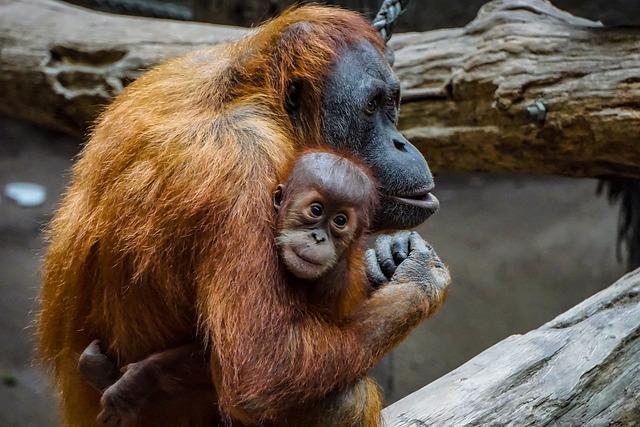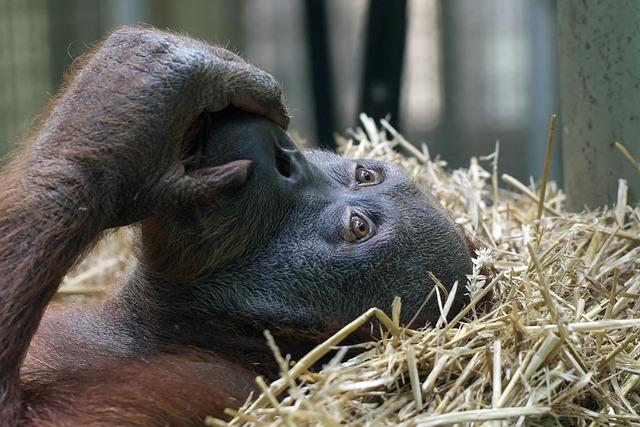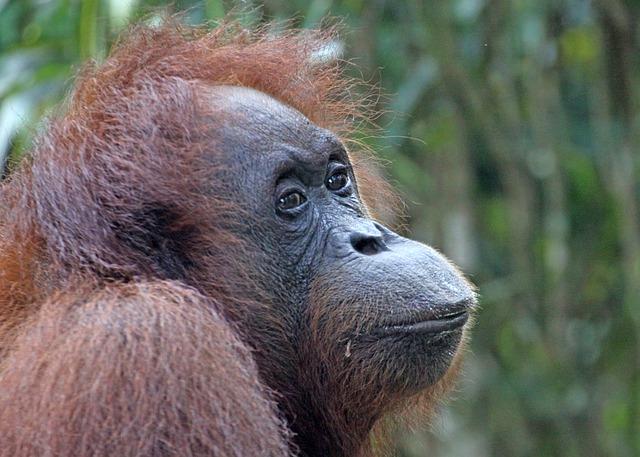- Introduction
- Habitat and Distribution of the Sumatran Orangutan
- Diet and Feeding Habits
- Behavior and Adaptation
- Threats and Conservation Efforts
- Conclusion
- FAQs
- References
Introduction
The Sumatran orangutan is one of the critically endangered species native to the dense tropical rainforests of Sumatra, Indonesia. Known for their reddish-brown fur and incredible intelligence, these primates play a crucial ecological role in maintaining forest diversity. In this article, we will dive into their habitat, dietary preferences, fascinating behavior, the dangers they face, and the dedicated conservation efforts aimed at saving them from extinction.
Join us as we uncover everything there is to know about these gentle forest giants and why their survival is vital to the health of their ecosystems.
Habitat and Distribution of the Sumatran Orangutan

(Image: Pixabay/@7103983)
The Sumatran orangutan (Pongo abelii) exclusively resides on the island of Sumatra, primarily in the northern region. Their natural habitat consists of lush, biodiverse tropical rainforests that provide ample food sources and safe nesting sites. These forests are located in regions like the Leuser Ecosystem, which spans across the Aceh and North Sumatra provinces.
Unlike other orangutan species, Sumatran orangutans spend more time in trees, swinging effortlessly from branch to branch. This arboreal lifestyle is largely influenced by their surroundings, as the towering canopies offer protection from predators and human intrusion. However, continuous deforestation and palm oil plantations have drastically reduced their living space.
Today, their population is fragmented, with some groups inhabiting lowland swamps, while others thrive in high-altitude forests. The adaptability of these primates to different forest heights showcases their resilience, but all efforts must be made to safeguard these vital habitats.
Organizations like the Sumatran Orangutan Conservation Programme (SOCP) are working tirelessly to protect their dwindling forests, urging for stricter anti-deforestation laws and sustainable palm oil certifications to combat habitat destruction.
Diet and Feeding Habits

(Image: Pixabay/@Andhoj)
Sumatran orangutans are primarily frugivorous, consuming an impressive variety of fruits to maintain their health and energy levels. Their diet changes according to seasonal availability, with favorite foods including durians, figs, jackfruits, and mangos. Their love for fruits is not only for sustenance but also plays a pivotal role in seed dispersal, helping plant new trees in their habitats.
When fruits are scarce, orangutans adapt by eating leaves, flowers, bark, termites, and even small invertebrates. They exhibit incredible problem-solving abilities, often devising unique techniques to access difficult-to-reach food sources. For example, they are known to use sticks to scoop out honey or termites from tree trunks, showcasing their intelligence.
Interestingly, their dietary habits influence forest growth, as they act as natural agents of regeneration. Seeds that pass through their digestive system often have higher chances of germination due to the nutrient-rich conditions provided by their feces.
However, habitat loss and competition with humans for resources have disrupted their feeding patterns, leading to malnutrition and decreased reproductive success. Conserving their natural food sources is integral for ensuring their long-term survival.
Behavior and Adaptation

(Image: Pixabay/@LaTerreEstMonOxygène)
Sumatran orangutans are exceptionally intelligent primates, known for their ability to use tools, solve complex problems, and exhibit advanced social behaviors. They live semi-solitary lives, with adult males sparingly interacting with other orangutans aside from mating encounters. Females, on the other hand, share a strong bond with their offspring and play a significant role in teaching them survival skills.
Newborn orangutans rely heavily on their mothers, remaining by their side for up to seven years. During this time, they learn critical lessons such as constructing nests out of leaves and branches, foraging techniques, and how to avoid natural predators like Sumatran tigers.
These apes are primarily diurnal, sleeping in treetop nests during the night and foraging during the daytime. Their advanced motor skills and resourcefulness allow them to evade threats and navigate the dense forest landscape efficiently.
Adaptation is key to their survival. Over centuries, Sumatran orangutans have developed longer limbs and a lighter build compared to their Bornean counterparts. These traits help them move swiftly across the forest canopy—a testament to their evolutionary brilliance.
Threats and Conservation Efforts

(Image: Pixabay/@MonicaMaxWest)
The Sumatran orangutan population has faced a steady decline over decades, primarily due to human activities. Deforestation for palm oil plantations, illegal logging, and commercial development have destroyed their habitats, while poaching and the illegal pet trade further jeopardize their existence.
In addition, climate change has accelerated habitat degradation, making it harder for these primates to find food and shelter. Human-wildlife conflict is another major concern; farmers often kill orangutans who wander into agricultural lands in search of food.
To counter these threats, multiple conservation organizations have stepped in. Protected forests in Sumatra, such as the Leuser Ecosystem, serve as critical havens for orangutans. Programs like reforestation initiatives, wildlife corridors, and sanctuary-based rehabilitation have already shown promising results.
Public awareness campaigns emphasize the importance of sustainable palm oil practices and discourage poaching and illegal wildlife trading. Collaborative efforts between governments, NGOs, and local communities are key to reversing the grim fate of the Sumatran orangutan.
Conclusion
The Sumatran orangutan represents more than just a unique species; it symbolizes the interconnectedness of life on Earth. Protecting these intelligent primates means preserving the delicate balance of their ecosystems. While there are positive strides toward their conservation, much work remains to be done to ensure their survival. It is imperative that individuals, corporations, and policymakers unite in protecting this critically endangered species.
FAQs
What is the current population of Sumatran orangutans?
As of recent estimates, there are fewer than 14,000 Sumatran orangutans left in the wild.
Why are Sumatran orangutans critically endangered?
The primary reasons include deforestation, habitat loss, poaching, and illegal wildlife trade.
How do Sumatran orangutans differ from Bornean orangutans?
Sumatran orangutans are more arboreal, smaller in build, and have a more restricted range compared to their Bornean relatives.
What can I do to help conserve Sumatran orangutans?
You can support organizations working on orangutan conservation, reduce your palm oil consumption, and raise awareness about their plight among your network.

